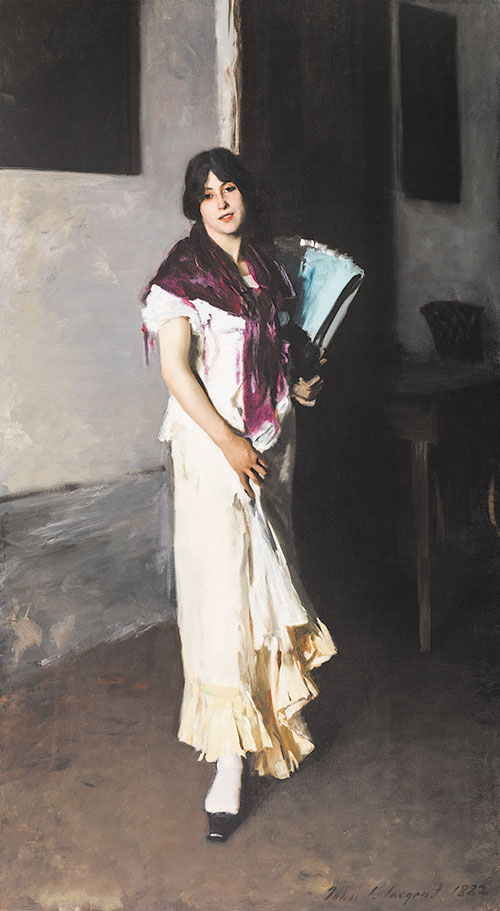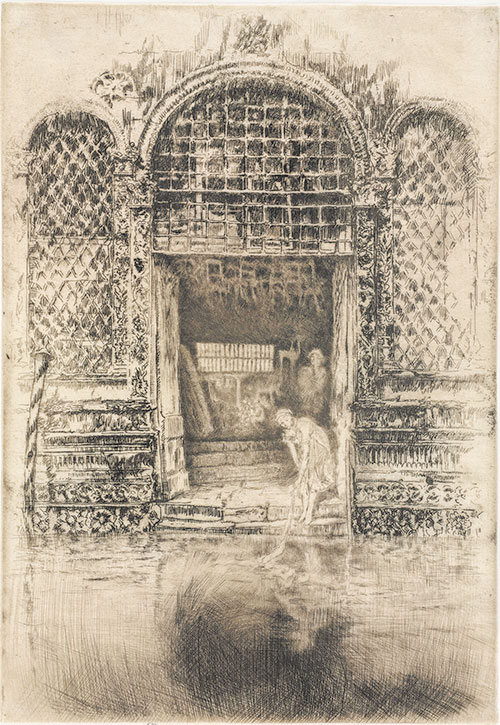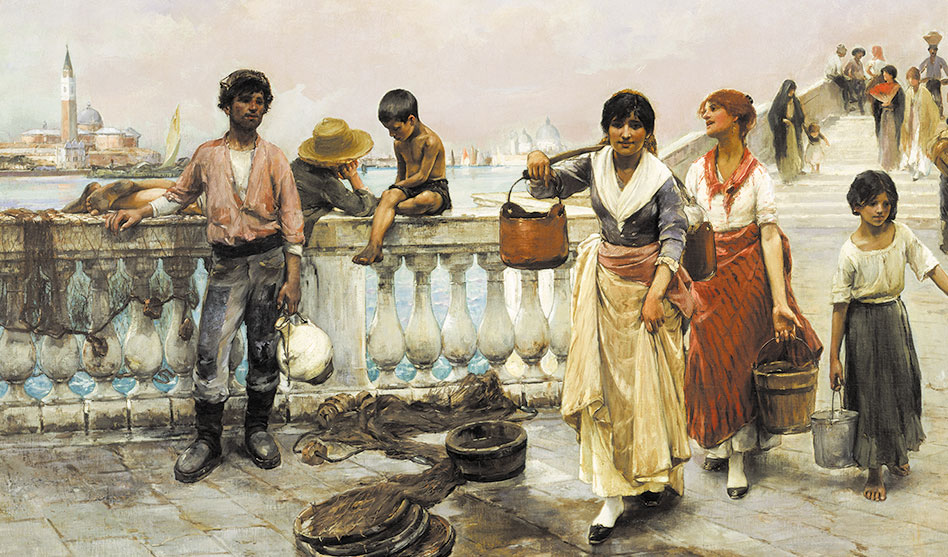Frank Duveneck, Water Carriers, Venice, 1884, oil on canvas, Smithsonian American Art Museum, Bequest of Reverend F. Ward Denys, 1943.11.1
Exhibit on display at the Amon Carter Museum features the works of Sargent, Whistler and others alongside Murano glass
DAVID TAFFET | Senior Staff Writer
taffet@dallasvoice.com
What are rooms full of luscious paintings and etchings of Venice doing at the Amon Carter Museum of American Art? Why, they’re highlighting the work American artists created from roughly 1860 until World War I during their trips to Venice.

Murano glass
As the title suggests, Sargent, Whistler, and Venetian Glass: American Artists and the Magic of Murano, American artists John Singer Sargent and James Whistler, the two best-known artists exhibited here, are highlighted.
And to further tie the show together, Venetian glass produced during this time period on the island of Murano is featured throughout the galleries. At the time, Venice was becoming a popular tourist destination for Americans. Many people began collecting Venetian glass, and artists often depicted it in their art.

John Singer Sargent’s, A Venetian Woman, 1882, oil on canvas, Cincinnati Art Museum, The Edwin and Virginia Irwin Memorial, 1972.37
Artists’ visits to Venice helped revive the city that had been in decline since Napolean captured it in 1797. Sovereignty over what was once a mighty city-state went back and forth between France and Austria over the next half century until Venice became part of the kingdom of Italy in 1866.
American artists were prominent among those who visited. Whistler had one 14-month-long stay, and Sargent went more often for shorter stays. Both often included Murano glass in their paintings.
The current exhibit at Amon Carter is extensive, featuring more than 140 works. When I think of depictions of Venice, I think of Canaletto, who painted sweeping panoramas of the city painted in the middle 1700s. These works still capture the essence of Venice, but are closeups of people working, playing and living in the city that looks much the same today as it did a century ago.
Frank Duveneck’s Water Carriers, Venice depicts everyday people carrying pails of water over a bridge on the Grand Canal surrounded by others going about their everyday lives.

James McNeill Whistler, The Doorway
Whistler’s etching The Rive depicts life along the Grand Canal, while his The Doorway is a closeup of life in one house along a small canal. Two women can be seen, one doing laundry in the filthy waterway outside their door.
Included in the exhibit is a painting of a gondola called The Fountains at Night, World’s Columbian Exposition. This canvas was actually painted in Chicago at what’s commonly known as the Chicago World’s Fair, held in 1893 to commemorate the 400th anniversary of Columbus’ voyages.
For the exposition’s Venice exhibit, 30 Murano glassblowers were brought in, as well as a team of gondoliers who rowed gondolas across the expo’s artificial lake. Depictions of Murano glass had piqued the interest of collectors, so pieces sold at the fair were a highlight.
An interesting take on Venice is a 1909 painting by Arthur Beecher Carles, a modern artist from Philadelphia. Close viewing of the canvas shows a modernist take on gondolas. But step across the gallery and, like an Impressionist masterpiece, the scene of the boats plying a canal in rough weather comes together.
And the Murano glass that fills the galleries is exquisite — enameled goblets that are replicas of pieces from the Renaissance, a fanciful vase adorned with flowers and dolphins, a conical goblet whose stem is a serpent.
A century of Venice history through an exhibit of work by American artists is an interesting take.
Sargent, Whistler, and Venetian Glass: American Artists and the Magic of Murano is on exhibit on the second floor of the Amon Carter Museum of American Art, 3501 Camp Bowie in Fort Worth, through Sept. 11. Visit CarterMuseum.org for details.

